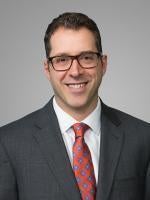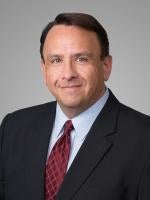On March 23, 2020, Governor Phil Murphy signed Executive Order 109, which “limit[ed] non-essential adult elective surgery and invasive procedures, whether medical or dental, [in order to] assist in the management of vital healthcare resources during this public health emergency.” The purpose of EO 109 was to “limit[] exposure of healthcare providers, patients, and staff to COVID-19 and conserve[] critical resources such as ventilators, respirators, anesthesia machines, and Personal Protective Equipment (‘PPE’) [that] are essential to combatting the spread of the virus.” At the time EO 109 was executed, coronavirus cases were rapidly increasing within the State. On March 23rd, New Jersey had 2,844 coronavirus cases in all 21 counties, an increase of 935 over the previous day, and at least 27 people had died.
In the weeks that followed, New Jersey saw the surge in cases for which it was preparing. On April 4, the three-day average of new confirmed positive COVID-19 cases peaked at 4,064 cases, and by April 14th, there were 8,084 of COVID-related hospitalizations and a staggering 1,705 patients on ventilators. But since that time, thanks to social distancing and New Jersey’s ability to flatten the curve, these numbers have fallen drastically. By May 11th, the three-day average of new, positive cases had fallen to 1,572 new cases—a 61 percent decrease. Likewise, the three-day average of new hospitalizations had fallen to 4,277 patients—a 48 percent decrease.
In light of this decreased burden on the healthcare system, Governor Murphy signed Executive Order 145, which allows for elective surgeries to resume as of 5 am on May 26, 2020. EO 145 provides that elective surgeries and invasive procedures may proceed at both licensed healthcare facilities and in outpatient settings not licensed by the Department of Health (e.g., health care professional offices, clinics, and urgent care centers), subject to limitations and precautions set forth in policies to be issued by the Division of Consumer Affairs, in consultation with the Department of Health, by Monday, May 18, 2020. EO 145 further states that the Department of Health and/or the Division of Consumer Affairs may issue supplemental or amended policies concerning elective surgeries and elective invasive procedures on or after Monday, May 18, 2020.
These policies are to address the following issues:
-
Which types of facilities can resume these procedures;
-
Which specific facilities are eligible to resume these procedures, based upon their current or potential capacity;
-
Whether facilities will be required to prioritize certain procedures, and if so, what considerations should guide these decisions;
-
Personal Protective Equipment requirements for facilities that resume these procedures;
-
Staffing requirements for facilities that resume these procedures;
-
Whether facilities should cohort COVID-19 and non-COVID-19 patients;
-
Requirements for patients seeking these procedures to undergo testing, self-quarantine, or other preventive measures, as applicable;
-
Policies surrounding visitors;
-
Policies surrounding discharge of patients after the procedures are completed; and
-
Reporting metrics regarding the resumption of these procedures.
As to outpatient elective surgery, the Order further states that guidance should be issued regarding:
-
The categories of licensed health care providers who may resume these procedures;
-
Whether licensed health care providers in outpatient settings will be required to prioritize certain procedures, and if so, what considerations should guide these decisions;
-
Personal Protective Equipment requirements for outpatient settings where such procedures are resumed;
-
Staffing requirements for outpatient settings where such procedures are resumed;
-
How licensed health care providers and outpatient settings can minimize person-to-person contact and facilitate social distancing;
-
Requirements for patients seeking these procedures to undergo testing, self-quarantine, or other preventive measures, as applicable;
-
Policies surrounding companions;
-
Policies surrounding patient follow-up after the procedures are completed; and
-
Recordkeeping and reporting requirements.
As of the Governor’s daily briefing on May 18th, the formal guidance had not yet been released by the Department of Consumer Affairs. However, at the briefing, Department of Health Commissioner Judy Persichilli outlined the guidance to be further detailed in formal rules. Specifically, Commissioner Persichilli stated the elective surgeries may resume at both hospitals and ambulatory surgery centers (“ASCs”). She further stated that ASCs may not perform elective surgeries on COVID positive patients, while hospitals should only resume these procedures if there is a 14-day decrease in new COVID emergency department visits, and admissions, and ventilator use.
The formal guidance issued by the Department of Consumer Affairs clarifies and expands upon Commissioner Persichilli’s general instructions. It provides five broad categories of guidance with which all healthcare providers must comply and adopt:
-
Avoid person-to-person contact in the office;
-
Facilitate social distancing in the office;
-
Adopt enhanced office cleaning and disinfection;
-
Establish rigorous protections for staff;
-
Stay informed about developments and obligations and share this guidance with patients.
In order to avoid person-to-person contact within an office, healthcare practices should continue to utilize telehealth to the maximum extent possible, including for follow-ups; prioritize those services that, if deferred, would cause patient harm; require anyone visiting the office to wear, at minimum, a cloth face covering, and provide a face mask to anyone who does not have one; screen all patients for COVID-19 symptoms by utilizing a no-contact temperature check and record findings in the patient’s chart; space appointments to minimize patient-to-patient interaction, and if feasible, have patients wait in their cars or outside until their appointment; schedule patients with known exposure or compatible symptoms at the end of the day or in a dedicated room; and schedule patients susceptible to COVID-19 complications when the fewest patients and staff will be present in the office.
Social distancing can be achieved by installing physical barriers and minimizing interactions during triage, check-in and check-out, and/or arranging waiting areas so that there is always six feet or more of distance between patients. Any patients with symptoms of respiratory illness should be isolated in a separate location or single-patient room immediately upon entry to the office and close the door. In addition, healthcare providers should restrict companions unless medically necessary or to accompany a minor, and all visitors should undergo the same screening as the patient, as well as wear a face mask or covering. Healthcare providers should also arrange for contactless patient registration and payment where possible, and disinfect all credit cards after each use in accordance with CDC guidance. Finally, to the extent feasible, workspaces should be rearranged to ensure that six feet or more of distance is maintained, and administrative staff should avoid sharing equipment, and any shared equipment must be frequently disinfected.
In order to ensure proper disinfection, providers should allocate sufficient time between appointments to adequately clean examination rooms; follow CDC guidance for disinfecting; dispose of medical waste consistent with routine procedures; remove from any waiting area books, magazines or toys; maintain staffing levels sufficient to perform disinfecting protocols; allow staff sufficient time for repeated hand washing between patients; and provide supplies for hand-washing including soap and alcohol-based hand sanitizers.
Staff should further be protected by accommodating telework and work-from-home to the greatest extent possible, especially administrative staff; require sick staff to stay home; record temperatures of all staff members upon arrival and require staff to go home if their temperature exceeds 100 degrees; direct all administrative staff to wear, at minimum, a face mask; require clinical staff to wear appropriate PPE consistent with CDC guidance; optimize the supply of PPE if PPE is in short supply utilizing CDC guidance; train staff in proper techniques for donning, doffing, and disposing of PPE; stagger schedules or implement rotations to reduce the number of people in the office; and schedule staff with increased susceptibility to complications from COVID-19 when the fewest patients and staff will be present.
All providers are required to stay informed on the latest CDC and/or OSHA guidance on an ongoing basis. Importantly, providers should maintain a log of patients treated in order to facilitate contract tracing and submit such information if required by the Department of Health or local board of health. Healthcare providers should also report COVID-19 cases and exposures to local boards of health, and develop a plan to respond to surges.
All healthcare licensees, such as dentists, oral surgeons, pulmonologists, otolaryngologists, and eye care professionals, performing elective surgeries which involve direct contact with a patient’s face, eyes, or mouth, or present a high risk of aerosolization, must comply with the following:
-
Defer elective procedures or routine dental or eye care if the patient is COVID-19 positive or symptomatic, until at least 10 days after the patient first experienced symptoms and at least 3 days (72 hours) have passed since recover, defined as resolution of a fever without use of fever reducing medications;
-
Postpone any elective procedure for asymptomatic patients if it is unlikely to result in an adverse outcome;
-
Weigh, and review with the patient, the risks of any elective surgery, invasive procedure, or routine dental or eye care, if the patient is at higher risk for COVID-19, including those patients with pre-existing comorbidities or immunocompromised;
-
Wear PPE, such as N95 masks, gloves, face shields, for protection; and
-
Implement supplemental infection control measures, assuring all surfaces are disinfected between patients.
All dental professionals should continue to comply with OSHA and CDC guidance for dentists, and should use high volume evacuators and isolation strategies, including rubber dams, when appropriate to limit exposure to aerosols.
All eye care professionals should use a slit lamp “breath” shield/barrier that is as large as possible without interfering with clinical care.
In the week leading up to the resumption of elective surgeries, it is possible that the Departments of Consumer Affairs and Health will issue further guidance. We will continue to monitor for any such updates and share them with our healthcare clients.






 />i
/>i

